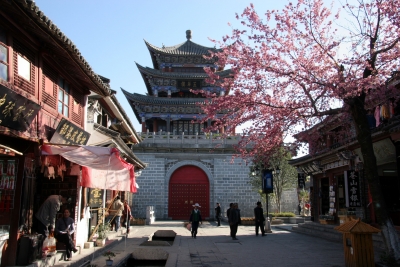
It was the 10th century AD, in the Kingdom of Dali. Lying in the south-eastern foothills of the Himalayas, in what is now known as China’s Yunnan province this independent kingdom was established by the Bai people – ethnic cousins of the Tai people (after which Thailand was named), the Shan people in Burma, and even the Ahoms of Assam!
The Dali kings believed they were descendants of the Buddhist Mauryan king Ashoka, and saw themselves as part of a brotherhood of Buddhist kingdoms that spanned from India, to Burma, Thailand and Vietnam. The Dali kings were very Indianised indeed, and apparently called their kingdom ‘Gandhara’ – that ancient renowned centre for Buddhist learning that lay thousands of kilometres west in the Swat region of Pakistan! Even the olden Burmese name for Yunnan is Gandhara.
Mad about Magadha
The Dali kings seemed to want to recreate the holy land of the Buddha’s homeland in their kingdom, thousands of kilometres away, and started naming many places after those in Magadha, modern Bihar. One of their cities was named Mithila, where the Buddha had once lived…in modern Bihar. A cave on the side of Lake Dali was called Kukkutapada Cave, after a famous Buddhist pilgrimage site in India. They did not stop there, and built a stupa next to this cave, which claimed to hold the relics of the Buddha’s favourite disciple, Ananda, though how they would have gotten hold of this 1500 years after his death later will forever remain a mystery.
As the early Americans would go on to name cities after their original counterparts in Europe, it seems that the Dali kings tried to recreate a Buddhist homeland in Yunnan by naming sites and cities after those in India. The mind boggles! The Persian historian Rashid of Din writes that these kings of Gandhara would actually refer to themselves as maharaja.
The Mongols Arrive
By 1253 AD, the ferocious Mongol armies of Kublai Khan armies had conquered this powerful independent kingdom, and its former capital, Dali, became a tributary to the Mongol Yuan dynasty. However, when the Mings topped the Yuans over a century later, they crushed Dali in 1381 AD after a fierce battle, as the kingdom had helped the Yuans. Dali now became just a remote outpost of the Ming empire. Over the centuries its people and nobility assimilated with Chinese culture and started becoming officials at the Ming court.
Happy Holi!
Though Yunnan is very much a part of China today, the Bai people still lives there and celebrates many Buddhist festivals. They, along with other neighbouring areas like Burma, Thailand, Laos and Cambodia celebrate a unique festival every April. It is called the Water Festival. It falls on the traditional New Years celebrations of these regions, and people celebrate by gently and delicately splashing scented water on one another. It bears a startling resemblance to the Hindu festival of Holi, held around the same time every year, where Indians not-so-gently hurl coloured water (and other substances) at each other! In fact, in Thailand, this festival is known as Songkran, which directly comes from the Sanskrit word ‘Sankranti’, meaning ‘astrological passage’.
Picture Credit : Google
